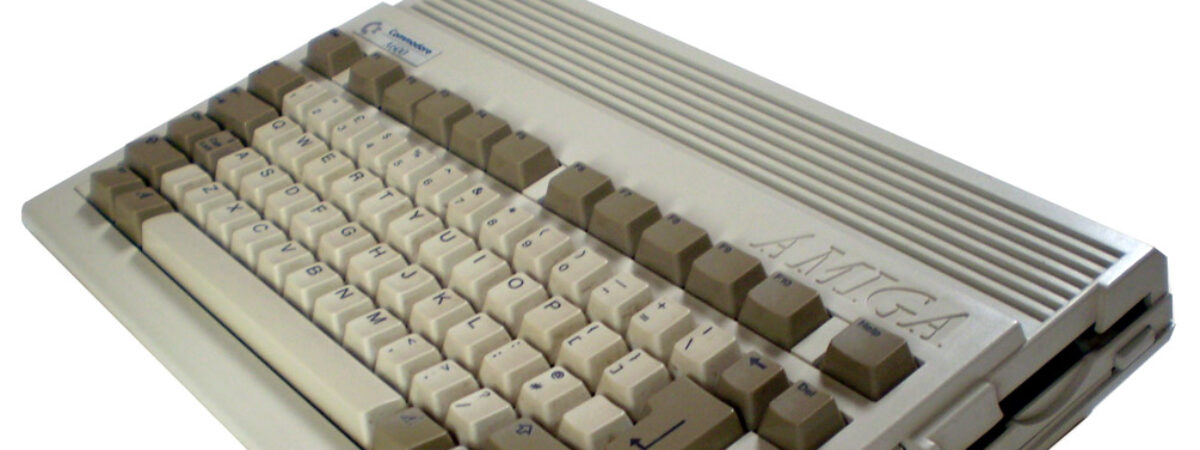Throwback Thursday: the Amiga A600
This is the first of what I hope will be a regular(ish) series of posts where I look back on tech from my childhood and tech that changed the world in some way, as well as just some generally cool stuff we’ve all forgotten about.
To kick this series off, I’m starting with the single biggest influence on my eventual career into IT – the Commodore Amiga A600.
The Amiga line of home computers had been around since about 1985, but the first one I laid my hands on was the A600.
Released in 1992, the A600 stood apart from the rest of the Amiga lineup due to its size. Lacking a number pad, the A600 was quite compact and therefore fit nicely in front of the family TV – yes, that was a selling point – monitors were expensive back then, ok?
Equipped with a massive 1MB RAM, and a blazingly fast 7.09Mhz Motorolla 68000 CPU (which ran slightly quicker when outputting to NTSC; 7.16mhz), the A600 also featured an industry standard 44 pin IDE port for adding a 2.5″ hard drive, and an industry standard (at the time) PCMCIA slot, for PC Card style peripherals, as well as the usual parallel and serial ports.
Not the most ground-breaking model ever released, nor was it the most compatible (sitting halfway between the aging, but hugely popular A500 / A500+ models and the newer, more advanced A4000 and, later, A1200 models), but it did the job.
We got one in 1992 or 1993, not long after launch as a replacement for our family Sinclair ZX Spectrum +2 (which was actually made by Amstrad, but there you go) and immediately it was the greatest thing I’ve ever laid hands on.
To start with, this thing loaded software from floppy disk, which was infinitely faster than the Spectrum’s cassette based loading. It could also output 32 colours at once, from a palette of 4096; which I think makes it 12bit, and up to 4096 in a special “HAM” mode (Hold and Modify) at specific resolutions. Audio-wise, it had the same capabilities as most other Amigas, which meant 4 8bit audio channels – a feature that made the Amiga popular with electronic music artists at the time (Mike Oldfield used one for his album Amarok, Peter Gabriel used them at one point, and even Kanye West started out using one).
But, the best thing of all was that it could play games. Modern games (at the time) like Sensible Soccer, Golden Axe, Elite, Civilization and, later, even games like Mortal Kombat and Myst. Strategy games quickly became my favourite, and I’d spend many an hour playing Sim City, or The Settlers; the latter holds lots of memories of playing two player, split screen (with two mice connected!) with my dad.
Of course, it could also do non-game stuff and, in fact, my dad did a lot of video editing and production on it – it was the baby brother of the bigger Amiga’s, such as the A2000 and A3000, that were being used to do the CGI for Star Trek TNG and Babylon5, after all. It was also, supposedly, to be used for school work; although very little homework was produced on this thing. What it did do, though was introduce me to programming.
Now, I’d dabbled with BASIC on the Spectrum, but bear in mind I was still only about 8 or 9 at the time, so I never really got far with it beyond little “hello world” style things. The Amiga, however, coupled with some great tech tutorials in the big magazines at the time, made everything easier and more exciting.
While I still never got that far with it, I did learn a lot of the basics of programming and development and, along with also learning markup languages (AmigaGuide format was amazing for making interactive stories and “choose your own path” style adventures), it gave me a great foundation for later, when I started dabbling in web development properly.
Now, I could write about the fun I had with this machine for hours, but I’ll leave this here. Instead, keep an eye out for a future post on the A1200, which we upgraded to a few years later.

